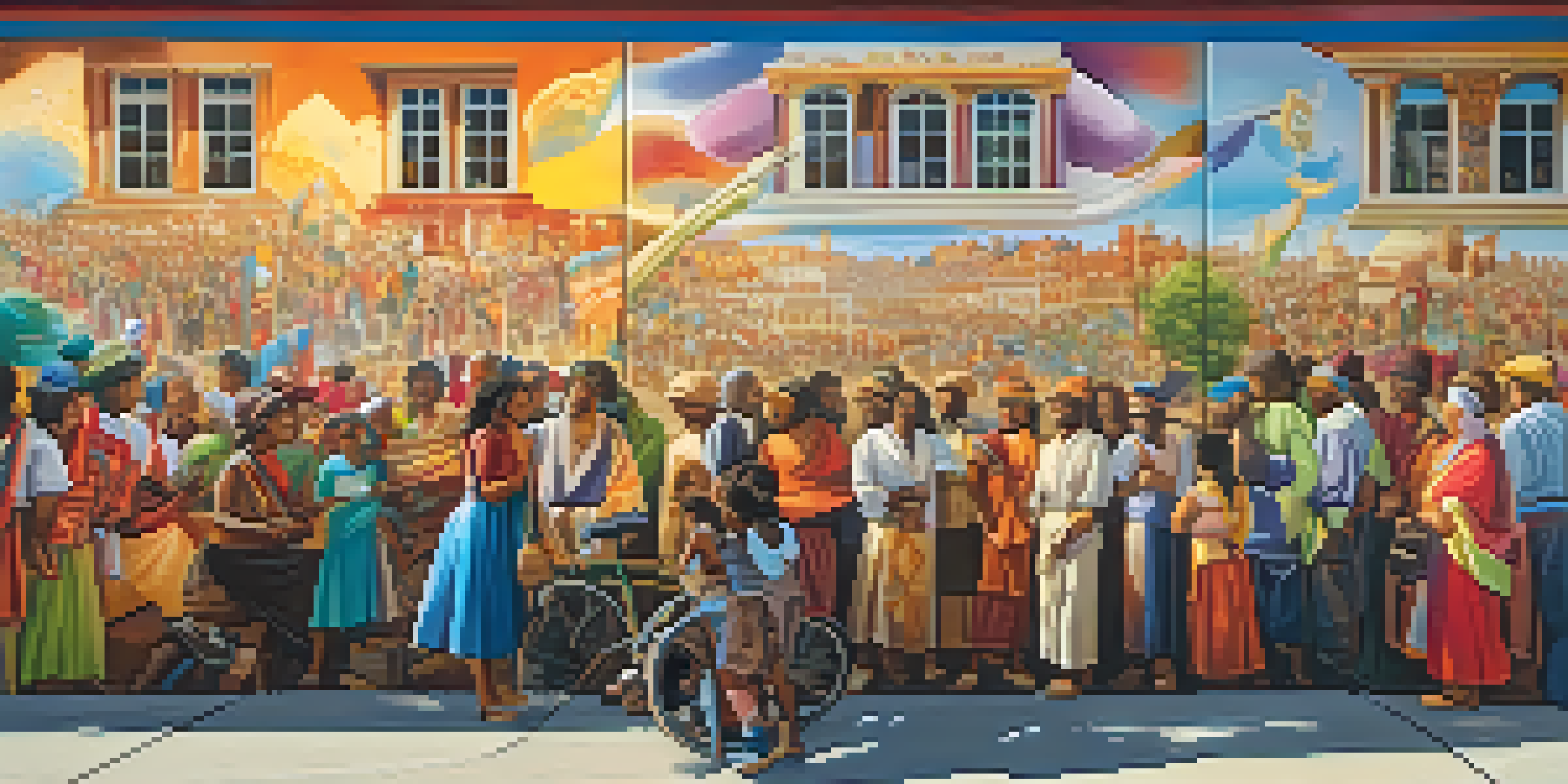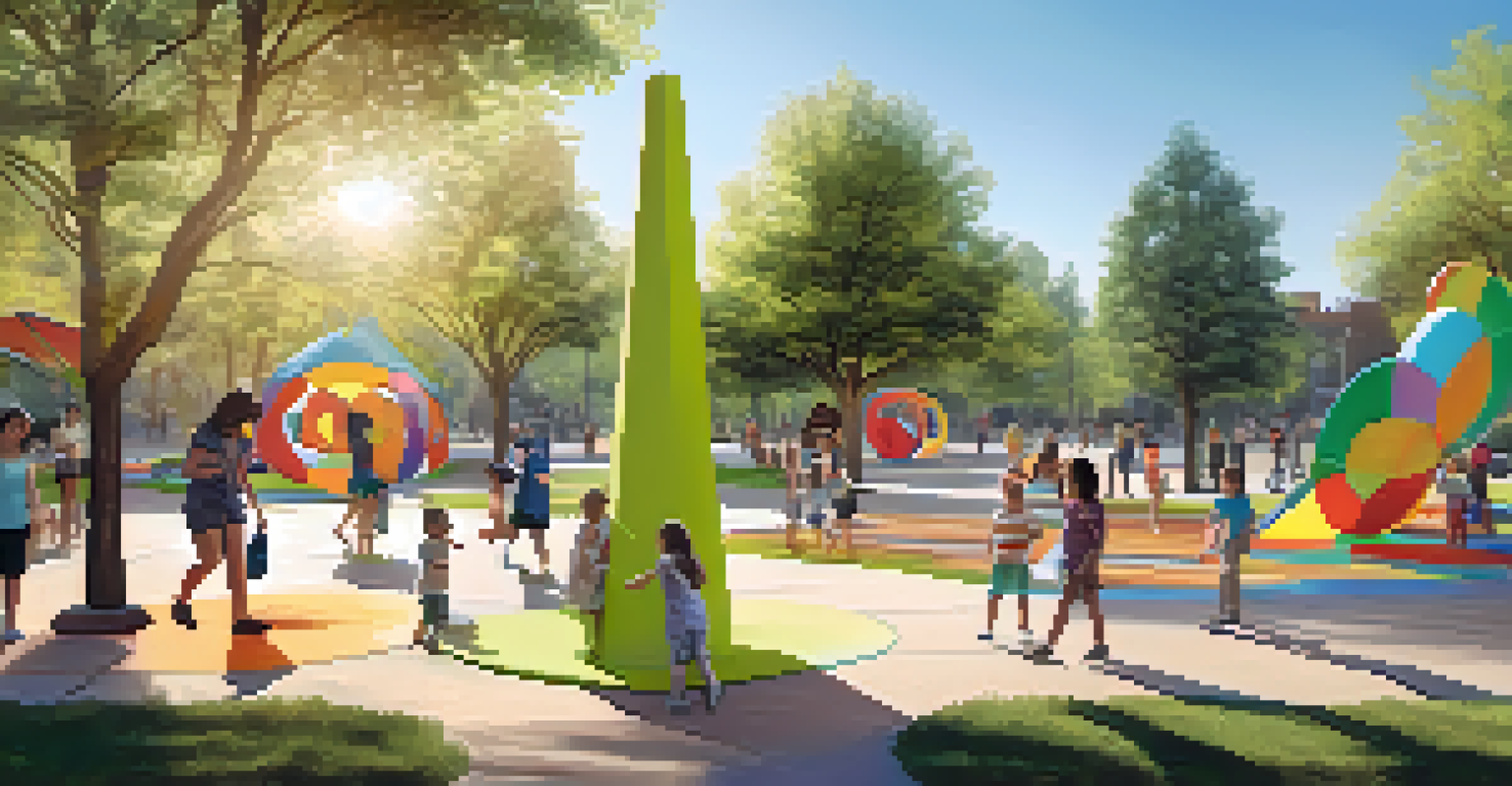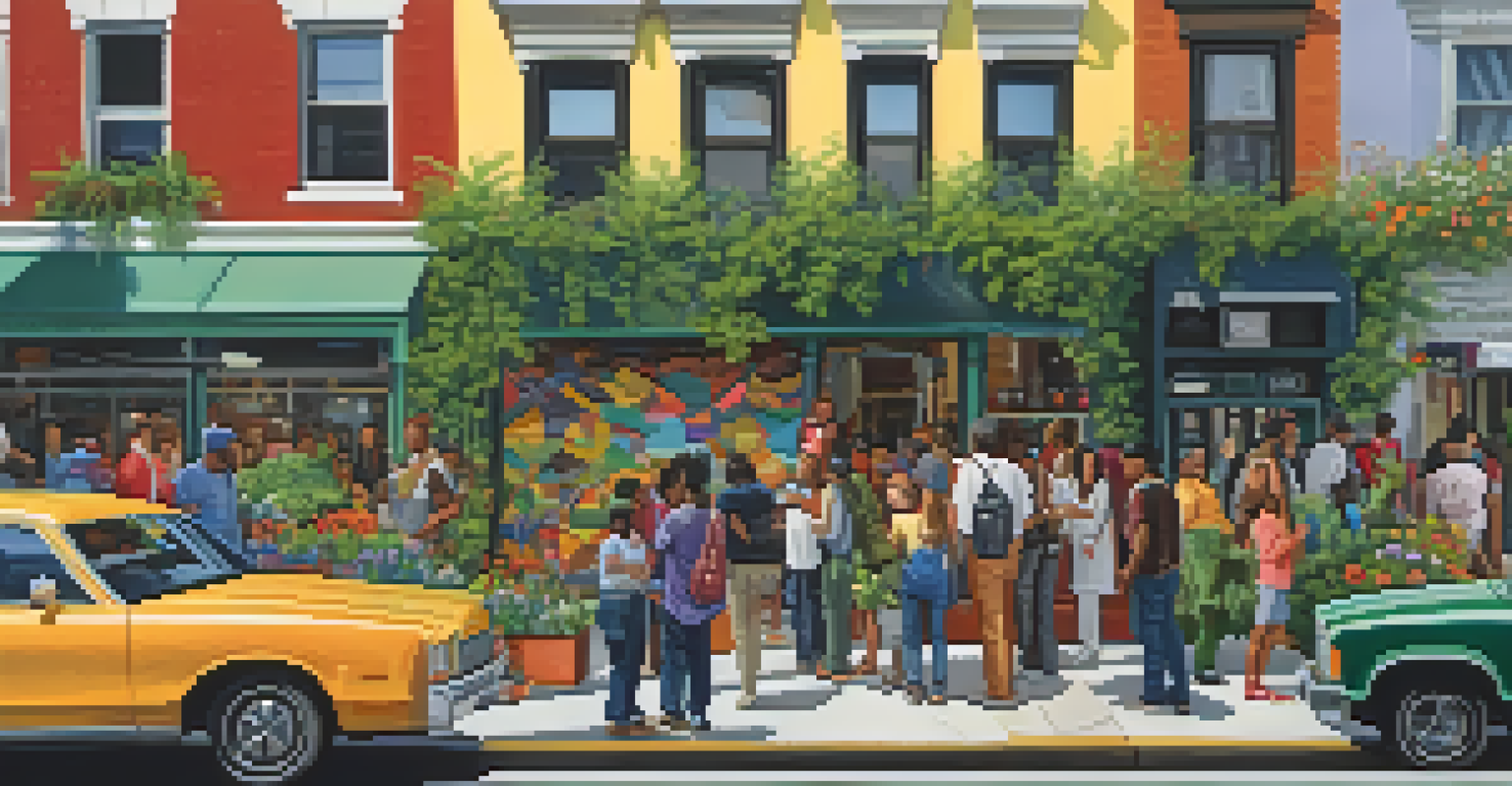Exploring the Impact of Public Art on Urban Community Identity

Defining Public Art and Its Significance in Urban Areas
Public art encompasses a wide range of artistic expressions displayed in public spaces, from sculptures to murals. It serves as a bridge between art and the community, making creativity accessible to all. This accessibility fosters a sense of belonging, as people engage with art in their everyday environments.
Public art is not just for the elite; it belongs to everyone.
In urban areas, public art can transform dull spaces into vibrant areas that invite exploration and interaction. Think about the difference between a blank wall and a colorful mural; the latter instantly draws the eye and encourages people to pause, reflect, and connect. This transformation can have a profound impact on how residents perceive their neighborhood.
Furthermore, public art often reflects the culture, history, and values of the local community. By showcasing local artists or themes relevant to the area, public art can create a sense of pride among community members, reinforcing their identity and connection to the space.
The Role of Public Art in Community Engagement
Public art not only beautifies a space, but it also serves as a catalyst for community engagement. When people interact with art, they are often inspired to participate in discussions about their environment. This dialogue can lead to increased civic involvement, as residents feel more invested in their community.

For example, community murals often involve local residents in the creation process, fostering collaboration and ownership. This direct involvement not only enriches the artwork but also strengthens social ties among participants. As a result, public art becomes a shared experience that unites people across different backgrounds.
Public Art Enhances Community Identity
Public art reflects local culture and history, fostering a sense of pride and belonging among residents.
Moreover, events surrounding public art, like unveilings or festivals, can bring diverse groups together, encouraging a sense of camaraderie. These gatherings can introduce residents to new perspectives and ideas, further enhancing the community's identity through shared experiences.
Public Art as a Reflection of Local Culture and History
One of the most compelling aspects of public art is its ability to tell stories. Artists often draw inspiration from local history, cultural practices, and community narratives, creating works that resonate deeply with residents. This storytelling aspect can help preserve a community's heritage and make it more tangible for future generations.
Art is the most beautiful of all lies; it is the truth that we have created.
For instance, a mural depicting a significant historical event can educate both locals and visitors about the area’s past. Such representations not only honor those who came before but also instill a sense of pride in current residents. When art narrates a community’s story, it becomes a powerful tool for identity formation.
Additionally, public art can celebrate diverse cultures within a community. By showcasing various artistic styles and themes, it acknowledges the contributions of different groups, fostering inclusivity and understanding. This embrace of diversity can unite people, reinforcing a shared identity while also celebrating individual uniqueness.
How Public Art Influences Perceptions of Safety and Belonging
The presence of public art can significantly impact how residents perceive their surroundings. Vibrant, well-maintained artworks often signal a community that cares about its environment, which can lead to increased feelings of safety. When people feel safe, they are more likely to engage with their community, whether through walking, socializing, or attending events.
Conversely, neglected or vandalized artworks can have the opposite effect, potentially leading to feelings of unease or disconnection. Public art, therefore, acts as a visual cue that can either invite people in or push them away. This connection between art and safety highlights the importance of community investment in public spaces.
Art Boosts Economic Development
Vibrant public art attracts visitors, supports local businesses, and can increase property values in urban areas.
Moreover, when community members take pride in their public art, they are more likely to take care of their surroundings. This sense of stewardship fosters a stronger sense of belonging, as people feel a connection to the space they inhabit. Ultimately, public art can create a more welcoming environment that encourages community interaction and engagement.
Promoting Economic Development Through Public Art
Public art can be a powerful driver of economic development in urban areas. By creating visually appealing spaces, it attracts tourists and locals alike, leading to increased foot traffic. This uptick in visitors can benefit local businesses, as people are drawn to cafes, shops, and galleries in the vicinity of public art installations.
Moreover, public art can enhance property values, as neighborhoods with vibrant art scenes often become more desirable places to live. This not only benefits property owners but also contributes to the overall economic vitality of the area. When communities invest in public art, they are essentially investing in their economic future.
Additionally, public art initiatives can create job opportunities for local artists and artisans. By commissioning local talent, cities can ensure that the economic benefits of public art projects stay within the community. This investment in local talent not only fuels the economy but also nurtures a thriving arts culture, further enhancing community identity.
Challenges and Criticisms of Public Art Initiatives
While public art has many benefits, it is not without its challenges and criticisms. One major concern is the potential for public art to be seen as elitist or disconnected from the community. If art installations do not reflect the values or interests of local residents, they can alienate rather than unite.
Furthermore, the process of selecting public art can sometimes be contentious. Community members may have differing opinions on what constitutes 'good' art or what themes should be represented. This disagreement can lead to tensions within the community, highlighting the need for inclusive planning and collaboration.
Public Art Promotes Community Engagement
Interactive public art initiatives encourage dialogue and collaboration, strengthening social ties within diverse communities.
Additionally, funding for public art projects can be limited, which may affect the quality or scope of initiatives. Communities often rely on grants, sponsorships, or public funding, which can be unpredictable. Finding sustainable funding sources is essential to ensure that public art continues to thrive and reflect the identity of urban communities.
The Future of Public Art in Urban Community Identity
As cities continue to evolve, so too will the role of public art in shaping community identity. With advancements in technology, we are likely to see more interactive and digital art installations that engage audiences in innovative ways. These new forms of public art can create even deeper connections between residents and their environment.
Moreover, the emphasis on sustainability and environmentally-friendly practices is likely to influence future public art initiatives. Communities may prioritize eco-friendly materials and themes that promote awareness of environmental issues. This shift can further enhance community identity by aligning art with shared values and goals.

Ultimately, the future of public art will depend on continued collaboration between artists, community members, and policymakers. By working together, they can ensure that public art remains a vital part of urban landscapes, enriching community identity and fostering a sense of belonging for everyone.